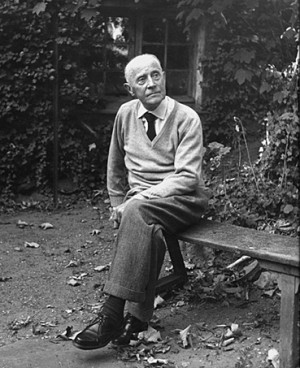Gaston-Émile Duchamp dit Jacques Villon ( - )

Jacques Villon, artist name of Gaston Duchamp, is a French painter, engraver, illustrator and lithographer. He is the brother of Dadaist painter Marcel Duchamp(1887-1968), sculptor Duchamp-Villon(1876-1918) and painter Suzanne Duchamp (1889-1963).
At the age of 16, he made his first engravings with his grandfather, the Rouen-based painter-engraver Emile Nicolle. In 1894, Villon attended the Rouen School of Fine Arts, and published his first drawings in the Rouen-Artiste magazine. A year later, Villon moved to Paris and frequented the Cormon studio. To distinguish himself from his brother Marcel, he adopted the name Jack (later Jacques) Villon, after the poet François Villon.
In 1897, Villon sold his drawings in L'assiette au beurre, Le Rire, Le Chat noir and, above all, Le Courrier français. He met Renoir, Steinlen and Francis Jourdain, who introduced him to color aquatints, and his publisher became Edmond Sagot. This period also saw the production of a number of posters using color lithography.
In 1910, Villon ceased all collaboration with the newspaper industry, devoting himself to painting and engraving. In the early '10s, he was a member of the "Puteaux Group", or "Golden Section", which brought together painters Gleizes, Marcel Duchamp (Jacques Villon's brother), Metzinger, Picabia, Léger, La Fresnaye and Laurencin. The Golden Section group was named after Leonardo da Vinci's theory of proportions, based on the golden ratio.
After the war, when he was mobilized and took part in the fighting, Villon resumed his engraving work. To earn a living, he produced numerous prints, copies of works by well-known painters. He began to develop a personal body of work blending abstraction and figuration derived from Cubism. From 1931 to 1933, he was a member of the Abstraction-Création group. Amro, painted in 1931, is one of the finest examples of French abstraction. In 1942, the Galerie de France exhibited his work. That same year, Jacques Villon met Louis Carré, who became his dealer and organized exhibitions around the world. The painter's first major exhibition took place at the Galerie Louis Carré in 1944, where 39 paintings were shown. This was the first step towards recognition for Villon, who humorously observed that "the hardest part of painting is the first 70 years". In 1956, he was commissioned to design the stained glass windows for Metz Cathedral. Exhibitions and prizes followed until his death in 1963.
Villon described his painting as impressionist cubism. He paid equal attention to the structure of his composition and the treatment of color, which he wanted to be both harmonious and balanced.
